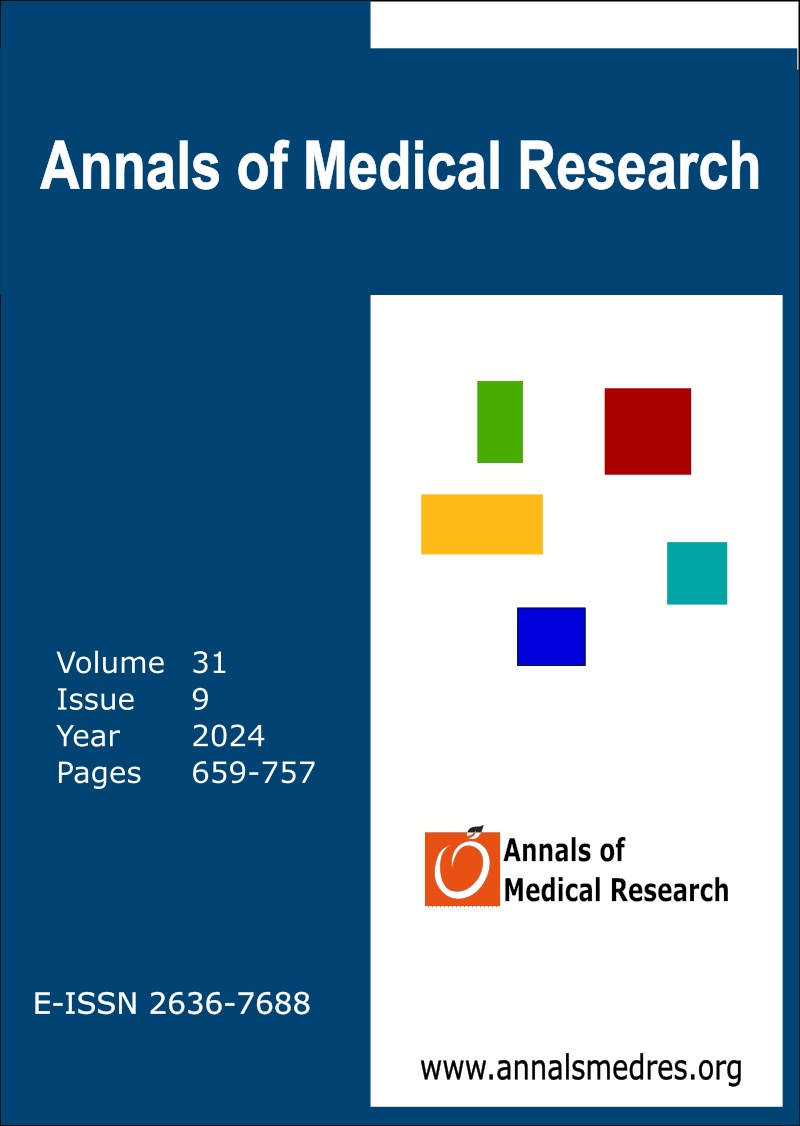Bipartitism in tarsal bones: A retrospective analysis of clinical and radiological features
Main Article Content
Abstract
Aim: Bipartitism in the foot, especially in the tarsal bones, is a rare anatomical variant characterized by dividing one bone into two separate ossification centers. This condition can be congenital or acquired, often remains asymptomatic, and is only discovered incidentally during radiological imaging. This study aims to present a comprehensive retrospective analysis of bipartitism in tarsal bones, assessing its prevalence, type of articulation, and associated clinical features in a cohort of patients.
Materials and Methods: A total of 4,645 patients were retrospectively evaluated from 6,145-foot images consisting of 4,975 computed tomography (CT) and 1,170 magnetic resonance imaging (MRI) scans obtained between 2015 and 2023. 15 patients with tarsal bipartitism were identified and contacted through the hospital system for in-person medical history and examination. Radiological exams assessed partial and complete bipartition, diastasis, and exostosis in the tarsal bones. Age, sex, side, trauma history, pain, foot deformity, gait disturbance, and other clinical findings were also recorded.
Results: Bipartitism was detected in 15 patients (0.32%), predominantly affecting males (87%). The most common variant was medial cuneiform bipartitism, observed in 13 patients (0.28%). Talus and calcaneus bipartitism were each observed in one patient (0.02%). Bilateral involvement was present in 67% of the cases, with 60% of patients reporting chronic pain. Complete dissociation of bipartite bones was noted in 80% of cases. Accompanying bipartitism, two patients had pes planovalgus, and one had hallux varus deformity.
Conclusion: Although bipartitism of the tarsal bones is rare, it remains a diagnostic challenge due to variability in clinical presentation and possible association with other foot deformities. Accurate diagnosis through advanced imaging techniques is essential to differentiate these variants from fractures and guide appropriate treatment. This study contributes valuable insights into the prevalence and clinical impact of bipartitism in the tarsal bones, emphasizing the importance of early diagnosis and individualized treatment strategies.
Downloads
Article Details

This work is licensed under a Creative Commons Attribution-NonCommercial-NoDerivatives 4.0 International License.
CC Attribution-NonCommercial-NoDerivatives 4.0

